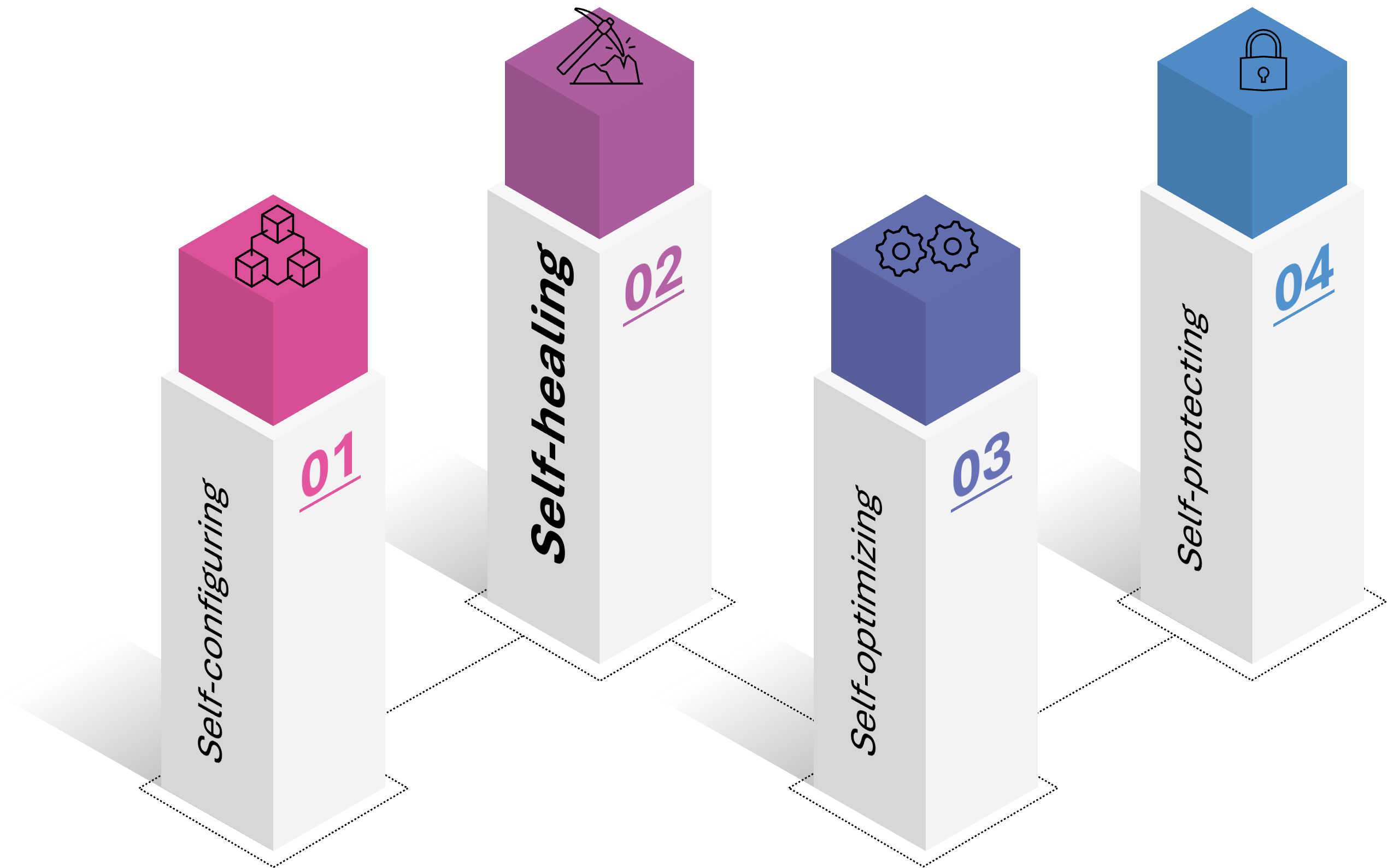ETSI Self-x Network and Service Management¶
The European Telecommunications Standards Institute (ETSI) Self-X network and service management framework is designed to address the complexities of managing modern, highly dynamic telecommunications networks. As networks evolve, the need for greater autonomy and self-management capabilities becomes critical. The Self-X framework, rooted in the principles of automation and artificial intelligence (AI), aims to create networks that can manage themselves with minimal human intervention, thus optimizing performance, reliability, and efficiency.

Key Concepts of Self-X Networks
The Self-X framework encompasses various “self-*” capabilities that are essential for the automated and adaptive management of telecom networks:
- Self-configuration: Networks automatically configure themselves during setup or after modifications. This reduces manual intervention and speeds up the deployment of new services and network slices, especially in virtualized and cloud-based environments.
- Self-optimization: This functionality allows networks to continuously monitor and optimize performance, making real-time adjustments to parameters like bandwidth allocation, traffic distribution, and power consumption. AI and machine learning algorithms are often employed to predict demand patterns and proactively optimize the network's performance.
- Self-healing: In the event of network failures, the system detects and resolves issues autonomously. Self-healing capabilities are crucial for minimizing downtime and ensuring network reliability, as they can reroute traffic, restart services, or reallocate resources without human intervention.
- Self-protection: Networks need to defend themselves against security threats. Self-protection mechanisms detect potential intrusions or attacks and take preventive or corrective measures to safeguard the integrity of the network.
Role in Network and Service Management
ETSI’s Self-X framework significantly impacts network management by reducing the complexity involved in managing distributed and heterogeneous networks. With 5G networks incorporating a wide array of devices, technologies, and applications, managing these elements manually would be inefficient. Self-X enables the automation of many network management tasks, which is vital for the scalability of next-generation networks.
In service management, the framework enables automatic scaling of services in response to changes in demand, leading to improved user experience. For example, during peak usage, the network can automatically allocate additional resources to ensure uninterrupted service delivery.
Integration with NFV and SDN
The Self-X framework is tightly integrated with Network Function Virtualization (NFV) and Software-Defined Networking (SDN), which are key enablers of modern telecom infrastructure. NFV allows network functions to be virtualized and deployed on generic hardware, while SDN provides centralized control over network traffic. The combination of Self-X with NFV and SDN further enhances the agility, flexibility, and responsiveness of the network.
In a nutshell, ETSI self-X network and service management framework is a pivotal part of the future of telecommunications. By incorporating self-configuration, self-optimization, self-healing, and self-protection capabilities, it ensures that networks can autonomously manage themselves, adapt to changing conditions, and deliver high-quality service with minimal human involvement. This is essential for the success of 5G networks and the upcoming shift toward more complex, dynamic, and heterogeneous network environments.